|
Seed Harvest of ‘Red-Maroon’, ‘White’ and ‘Lady Bird Royal Blue’ Bluebonnet Transplants
By
Jerry M. Parsons, Horticulturist and Extension Specialist, retired
Illustrated with Images from Ray Stachowiak, Bart Kelly, Billy McKenzie, and Milton N. Glueck and his wife Laura as seen at:
www.plantanswers.com/Gallery/Bluebonnets-RED-WHITE-BLUE/
In December, 2020, some of the bluebonnet colors generated by the effort of “COLOR-IZATION OF THE STATE FLOWER” described at www.plantanswers.com/98promotions/julyoct/julyoct.html
were made available as transplants in some local retail nurseries with the Milberger’s Landscaping and Nursery being the main distribution source. For the first time in history, bluebonnet transplants of RED-MAROON, WHITE and LADY BIRD ROYAL BLUE were available to gardeners. Images were submitted and are seen at:
www.plantanswers.com/Gallery/Bluebonnets-RED-WHITE-BLUE
Bluebonnet seeds usually mature six to eight weeks after flowering so the questions begin to pour in including:
When do I harvest the seeds, what color blooms will they produce? How do I know when to and how to harvest the seed?
Ray Stachowiak stepped up and furnished some wonderful images showing the differences in maturity of bluebonnet seed.
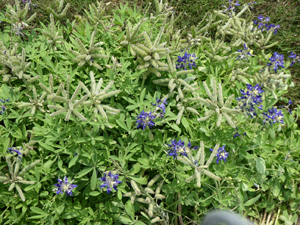
Bluebonnet BLUE with seed pods
BY Ray Stachowiak April 2020
|
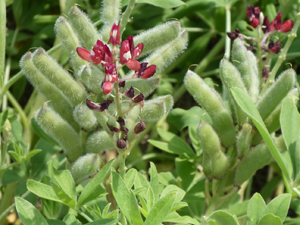
Bluebonnet RED-MAROON with seed pods
BY Ray Stachowiak April 2020
|
The pod of the bluebonnet seed should begin to look dry and lose most of its green color, turning first yellow and then brown. If the seeds are hard and dark when you examine them in the pod, they are mature. Green seeds that aren't hard are immature and not likely to germinate.
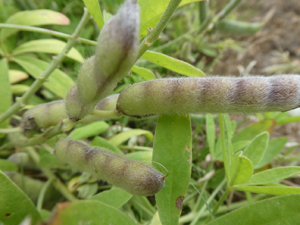
The pod of the bluebonnet seed should begin to look dry and lose most of its green color, turning first yellow and then brown.
|
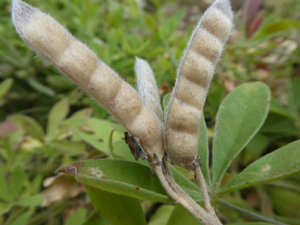
... and then brown
|
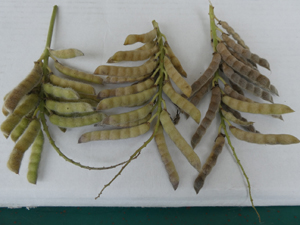
The pods of the bluebonnet seed should lose most of its green color, turning first yellow and then brown as shown from left to right.
|
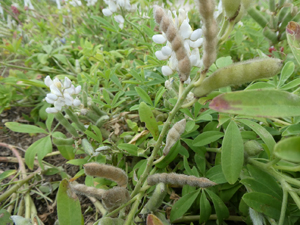
The pods of the bluebonnet seed should lose most of its green color, then turn yellow and then brown. They will then explode to scatter the dry seed.
|
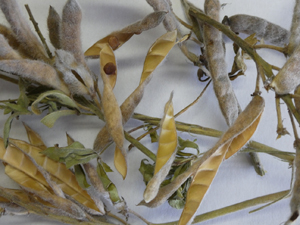
Bluebonnet dried pods with seed in popped hulls.
|
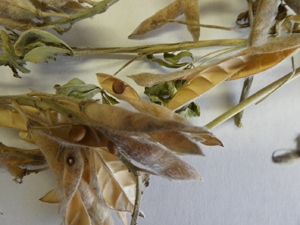
Bluebonnet dried pods with multiple seed in popped hulls.
|
The pods of the bluebonnet seed should lose most of its green color, turning first yellow and then brown. From left to right.
If you want to pull the entire plant, bluebonnets are ready to pull when 40 to 50 percent of the seed pods begin to yellow and turn brown. If you let the pods turn brown, they will explode and scatter the seed on days which have low humidity. On days which have low humidity harvest the brown pods early in the morning. The browning occurs about one to two weeks after the flower petals have dropped depending on weather conditions.
HARVESTING AND DRYING BLUEBONNET SEED USING
THE WHOLE PLANT TECHNIQUE
When harvesting the seed, either cut the dark yellow and brown ones as they turn color over time leaving as much stem as you can, or pull the entire plant, and place them in items such as a larger grocery bag (paper or I have even used the reusable polypropylene bags you buy at the store) and pin a couple clothes pins at the top to keep seeds from jumping out of the top of the bag leaving some openings at the top for air circulation. Placing the bags in full sun is desirable versus no sun as they will mold.
When placed in full sun as they begin to release the seed (pods opening up), if you’re close by the bags, one can actually hear the seeds hitting the sides of the bag as they are launched out of the drying pods. Hence the sound of the explosion.
The bags should be placed out in the sun.
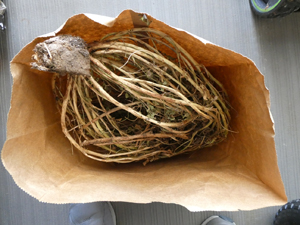
Bluebonnets -- one of the plants pulled to demonstrate the bag method.
|
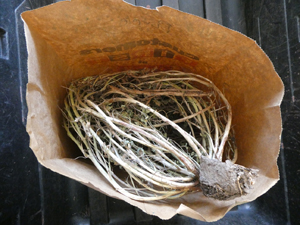
Bluebonnets -- the pulled plants are put loosely in the bag.
|
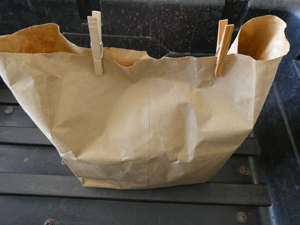
Bluebonnet -- Clothes pin is used to loosely close top of bag to prevent seed lose.
|
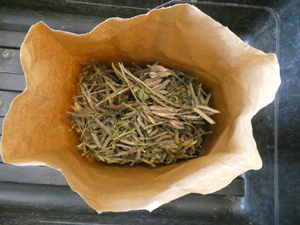
Bluebonnet seed which were hand harvested are put loosely in bags.
|
|
|
|



